Top quality Yega Snow Coffee Fine Coffee Red Cherry, what's the flavor?
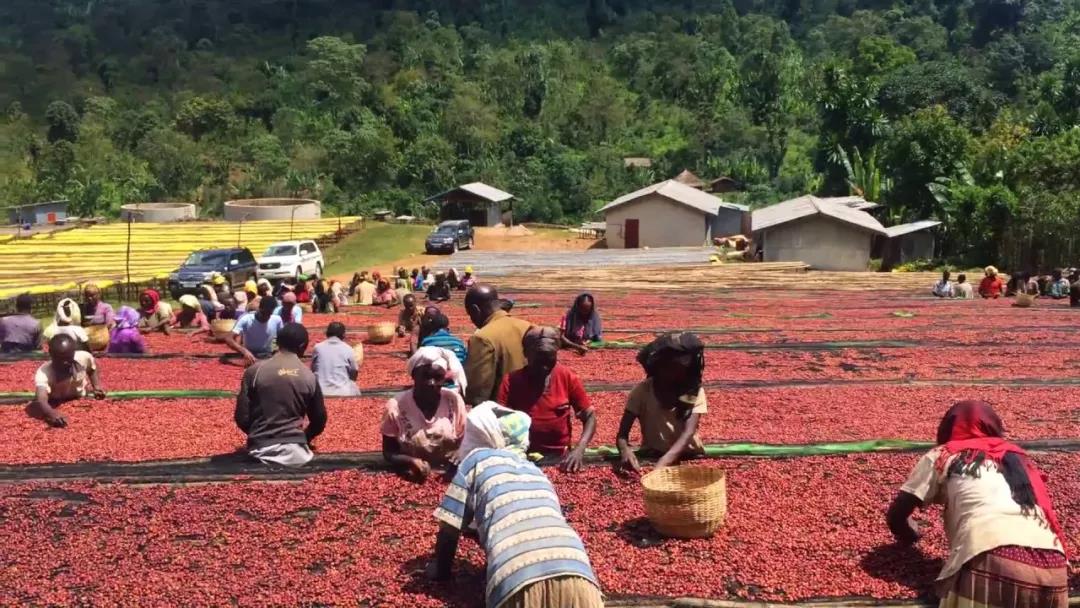
Professional coffee knowledge exchange more coffee bean information please follow the coffee workshop (Wechat official account cafe_style)
There are mainly eight major producing areas of Ethiopian coffee, namely: Lekempti, Limu, Illubabor, Djimmah, Harar, Teppi/Bebeka, Sidamo, Yirgacheffe.
Yega Xuefei is a small town in Ethiopia, 1700-2100 meters above sea level. It is one of the highest coffee producing areas in the world and is synonymous with Ethiopian boutique coffee. Lake Turkana, Lake Abaya and Lake Chamo bring rich water vapor here. The Rift Valley, represented by Misty valley, is foggy all the year round, like spring all the year round, with a gentle breeze, cool and humid, and thousands of coffee trees thrive, giving birth to the unique and unpredictable atmosphere of Yejia Xuefei's unique fragrance of flowers and fruits.
At first, Yejassefi's coffee trees were planted by European monks (a bit like Belgian monks growing wheat to brew beer), and later by farmers or cooperatives. Coffee trees are naturally scattered in forests, countryside and backyards. During the harvest season, the Ethiopian Coffee Trading Company will go to town to buy coffee beans collected by farmers and eventually sell them under the brand name "Yega Xuefei".
What is the Red Cherry Project?
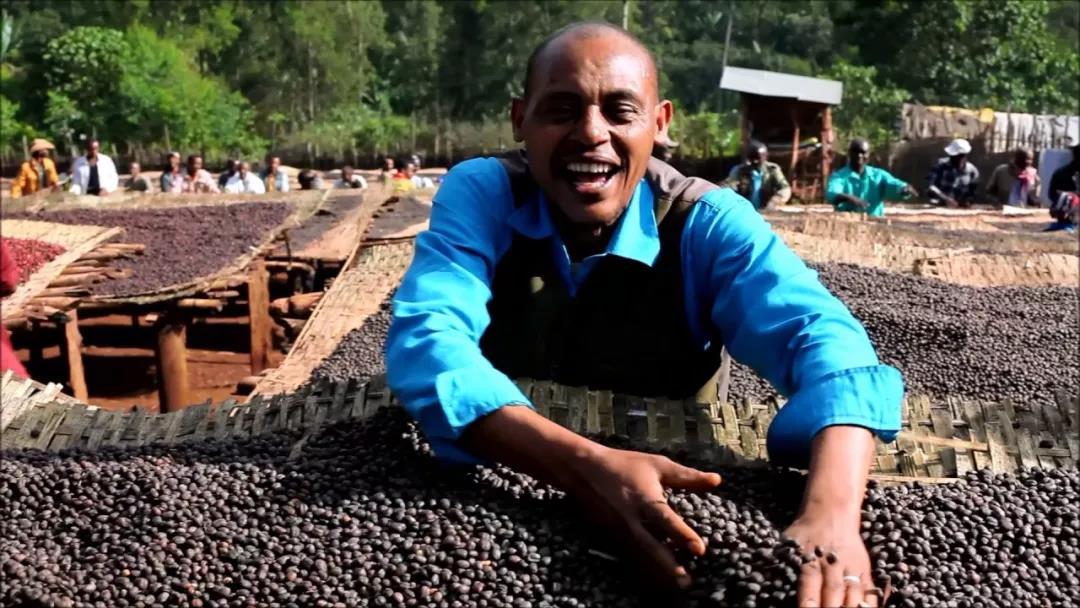
The "Red Cherry Project" (ORC) is a project to improve the quality of small-scale farms. In 2007, Trabocca, the largest raw bean manufacturer in the Netherlands, proposed the "Red Cherry Project" in pursuit of high-quality Essex beans. The plan requires that raw coffee beans should be picked not only by red fruit, but also by hand, but this is only the most basic requirement, and the plan is far from simple.
The main purpose is to encourage soybean farmers and surprise roasters. Trabocca, the largest coffee bean manufacturer in the Netherlands, invited all Ethiopian farms to produce small batches of beans of about 1500 to 3000 kilograms (50 bags of 25murmur50 bags) before the harvest season. Women can only choose fully 100% ripe red cherries, which makes a big difference in the flavor of brewed coffee. So careful-eyed and industrious Ethiopian women are important drivers of the Red Cherry project.
The red cherry program is also a reinforcing method, which makes the farm pay more attention to the process of selecting beans, and the prices of these coffees are relatively high. Red cherries have water washing, sun-drying beans, half-washing, half-sun, experimental coffee and so on. The main producing areas are Yega Sheffield, Sidamo, Punga Forest, Lekanti, Ken Bata, Iruba, Hara, Lim, etc., and joined Coroja Golocha in 2011 (near Harald). These are all unique flavors and can fully show the flavor of Ethiopian coffee. Trabocca will choose from it when he receives the coffee. Farms that pass cup quality tests conducted by offices in Ethiopia and the Netherlands will pay high bonuses.
Trabocca, the promoter of the red cherry project, invests all the profits made in recent years in the cooperative farm. Trabocca stressed that this is a plan with no profit, so the company only uses four people, including the boss and secretary, to implement the red cherry project, and other administrative related matters are supported by the parent company to reduce administrative expenses, and all the profits are returned to the cooperative farm.
Trabocca is the largest coffee bean seller in the Netherlands. The company has a deep relationship with Ethiopia. The founder of the company, Menno Simons, knew little about coffee until he was surprised by the unique taste of native beans on a trip to Ethiopia. At the same time, it is also engaged in the trade of other primary agricultural products, including cocoa and all kinds of fresh fruits, and is committed to finding all kinds of high-quality raw materials, paying attention to environmental protection and paying attention to the lives of farmers.
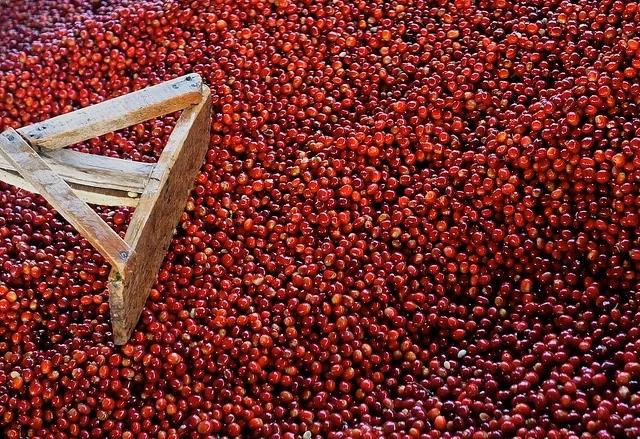
The company's vision is "Discover,Develop,Deliver". Since the founding of the company, Menno Simons has visited coffee bean producing areas, estates and processing plants across Ethiopia to discover coffee bean varieties with charming flavors. So the "Red Cherry Project" came into being.
First of all, the requirement of cup test score is high. In the Amsterdam cup test rooms of Ethiopia and the Netherlands, Trabocca will screen the coffee shipped from its origin and judge whether the coffee beans are up to standard through two cup tests in Ethiopia and the Netherlands. The coffee beans up to the standard will be auctioned by Trabocca to coffee buyers around the world. Generally, the transaction price of coffee beans auctioned through this platform can reach more than 4 times the spot price of international coffee, and the highest even reaches 20 times.
Secondly, the requirement of output is small and the requirement of quality is high. In order to have enough energy to take care of the top beans in Ethiopia, Trabocca suggested that the beans involved in the program must be in small batches, probably between 1500kg-3000kg.
Finally, Trabocca has paid much attention to this project because of its great investment and attention. Trabocca donated new sun drying racks, sunshade nets, generators and so on. At the same time, it also provides financial loan support, new hardware equipment and production processing knowledge and technology to help farmers improve their production level. In addition, through real-time monitoring and safe transportation, we can ensure that the beans of the "Red Cherry Project" can be taken care of in every link.
Specifically, Red Cherry plans to increase the purchase price of high-quality raw coffee beans to encourage coffee farmers to pay more attention to every process of picking and processing coffee beans. The coffee beans produced in this way are of better quality and taste, and can be better recognized in the end market, thus balancing the relatively high purchase price of coffee.
| | Aricha processing plant-non-red cherry project |
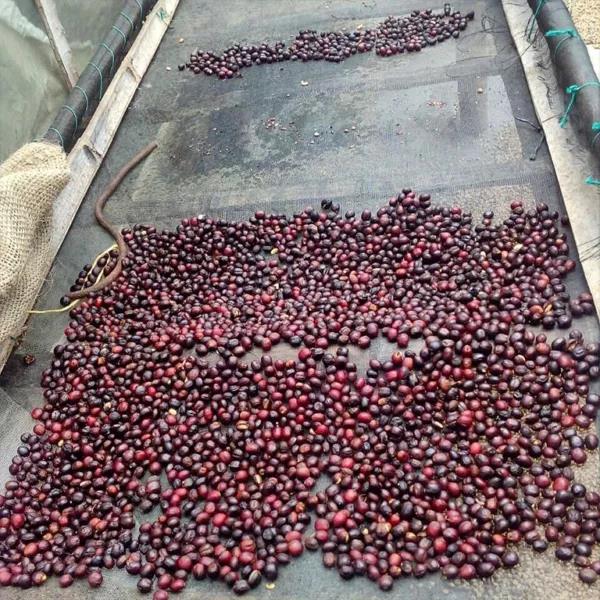
Yega Chuefei Fog Valley: Yega Chuefei Fog Valley Misty Valley. Since the introduction of water washing technique in the late 20th century, defective beans have been greatly reduced thanks to water washing, which has made coffee beans in this area become a trend among coffee fans all over the world. Abdullash Bagersh, a local coffee merchant, missed the traditional flavor of sun-dried beans, so he improved the treatment of sun-dried beans to improve the flavor and reduce the proportion of defects, and launched "Idido Misty Valley, Beloya and Aricha," three very famous Yejasuffi sun-dried beans.
Yega Xuefei Ariga: Yega Xuefei Ariga Aricha, formerly known as Idido. A well-known coffee bean processing plant near the town of Yejassefi
Misty Valley (red coordinates) | closest to the producing area of Yegashev (formerly: Edido Idido/ now: Erika Aricha coffee bean processing plant)
There are many high-quality coffee processing plants in the Yegashafi region, and a lot of caffeine comes from these processing plants and becomes more expensive. One of them is Kebel Aricha Mill Sunshine Yegashafi, which is also what we often call ARICHA beans. It is rated as Gr.1 or G1 (the highest grade of Ethiopian coffee) by ECX through exquisite sun treatment by Kebel Aricha processing plants, and is known as the "king of fruit".
After screening the available coffee cherries, the treatment factory puts the whole coffee cherries with intact pulp and peel in the elevated shed for sun treatment, which is a way of putting in high-intensity human labor, isolating contact with the ground, preventing the miscellaneous smell of soil in the process of sun exposure, and creating an unusually clean fruit flavor.
After more than two weeks of sun exposure, the dark brown coffee fruit is stored professionally, waiting for the whole flavor to ripen. Before shipping, the processing plant will take the coffee beans out of the coffee cherries, and the sweetness can be imagined.
| | comparison of raw beans |
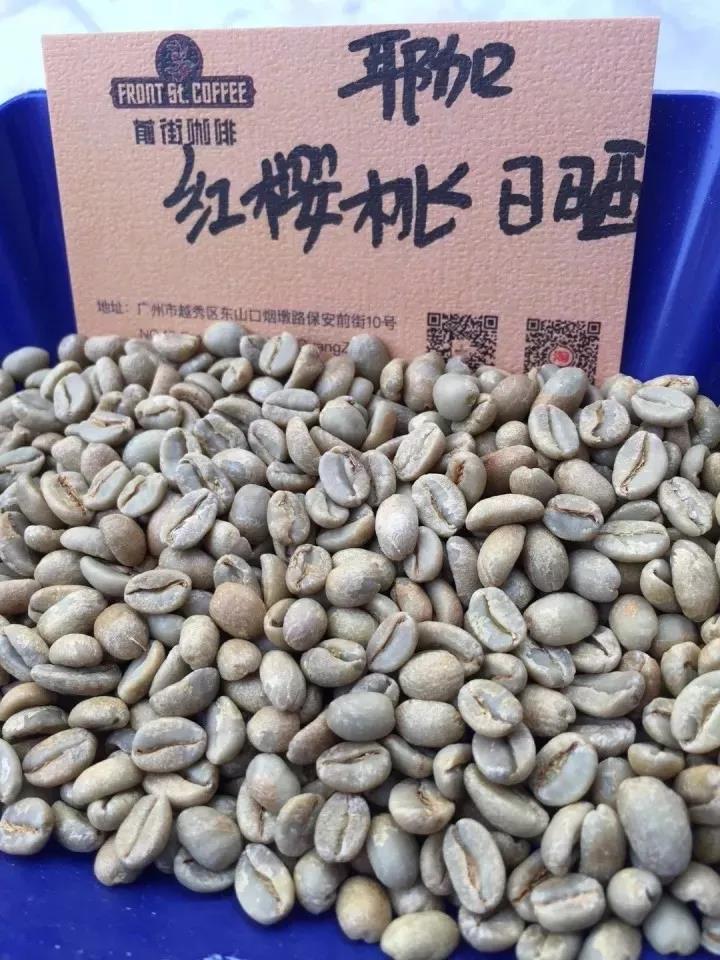
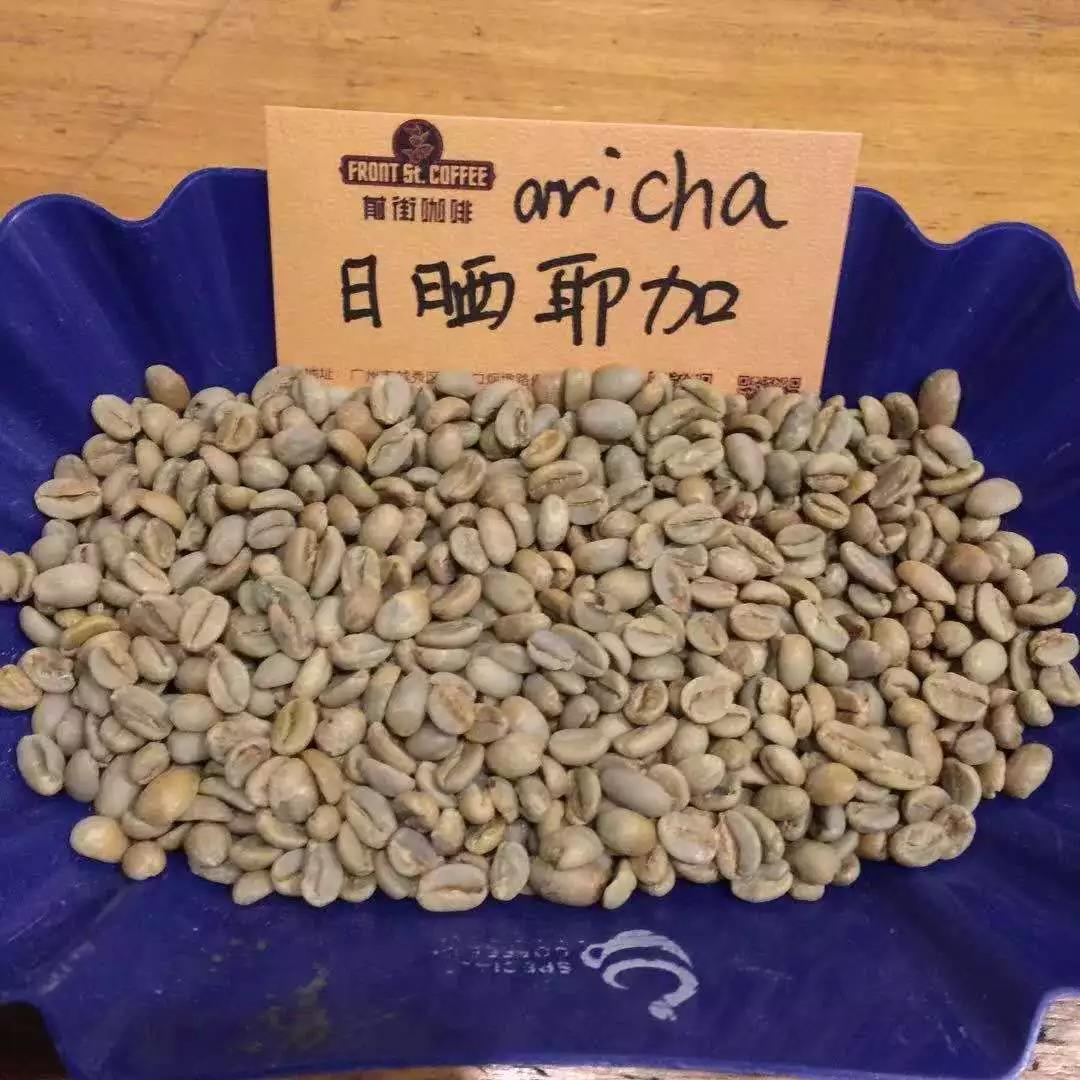
Yejia Xuefei body variety is a local native species, small grain species, the appearance is more round, the bean body is very small, mostly between 14-15 orders.
Red cherry and aricha belong to the G1 level, from the raw beans are yellow and green color, is a typical sun-cured coffee color, the particles are uniform and full, less defective beans.
| | comparison of baking |
[red cherries]: put the pot at 194 degrees.
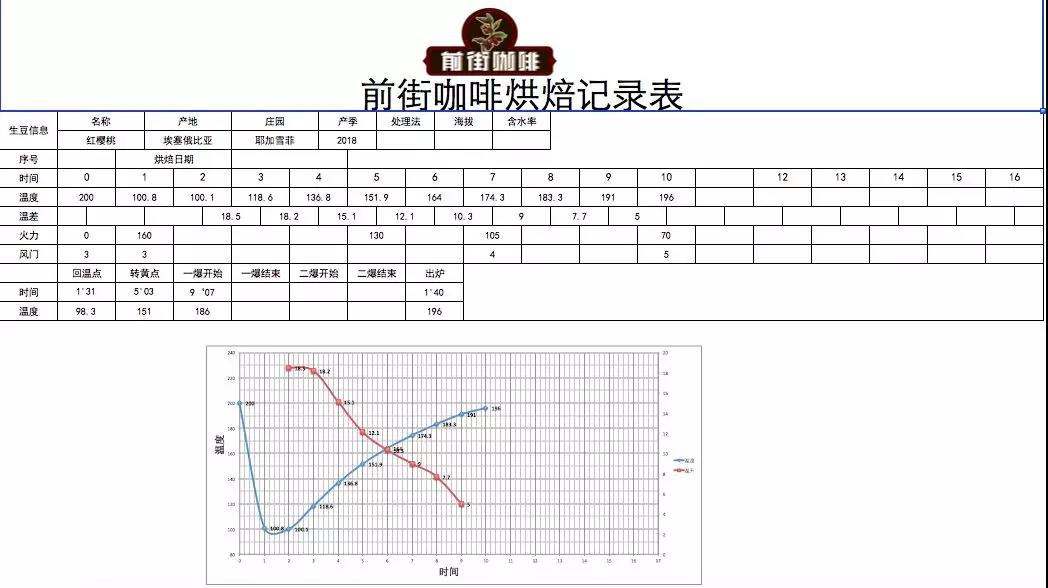
[Aricha]: put the pot at 198.6 degrees
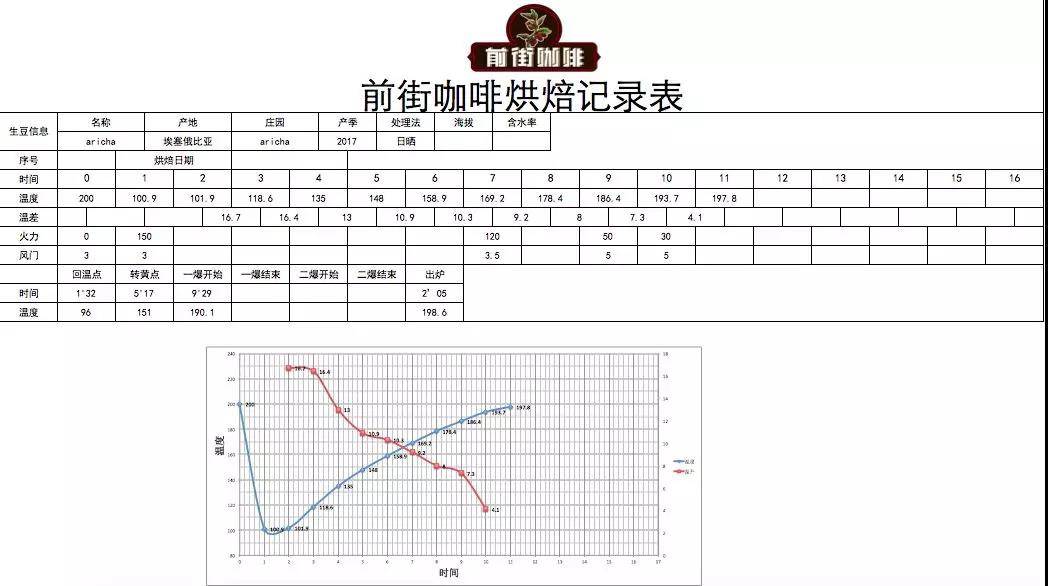
From the baking curve, the baking curve of red cherry is smoother, while Aricha is more tortuous, this is because the bean maturity of Aricha is not as uniform as that of red cherry, so we slightly prolong the dehydration time of Aricha, making the overall color of Aricha more uniform and fuller.
On the other hand, the maturity of red cherries is more uniform and the flavor is clean, so we adopted light baking to retain more floral acidity and fermented aromas of ripe fruits.
Although the baking temperature and development time of Aricha is longer than that of red cherry, the temperature of red cherry is higher than that of Aricha, which makes it full of sweetness and aroma. Although the time after the explosion of Aricha is long, but the temperature is not high, so a certain type of flavor will be relatively strong, but the whole is slightly thin, but the advantage of baking in this way is that it looks good and can get a cleaner flavor.
| | Cup test comparison |
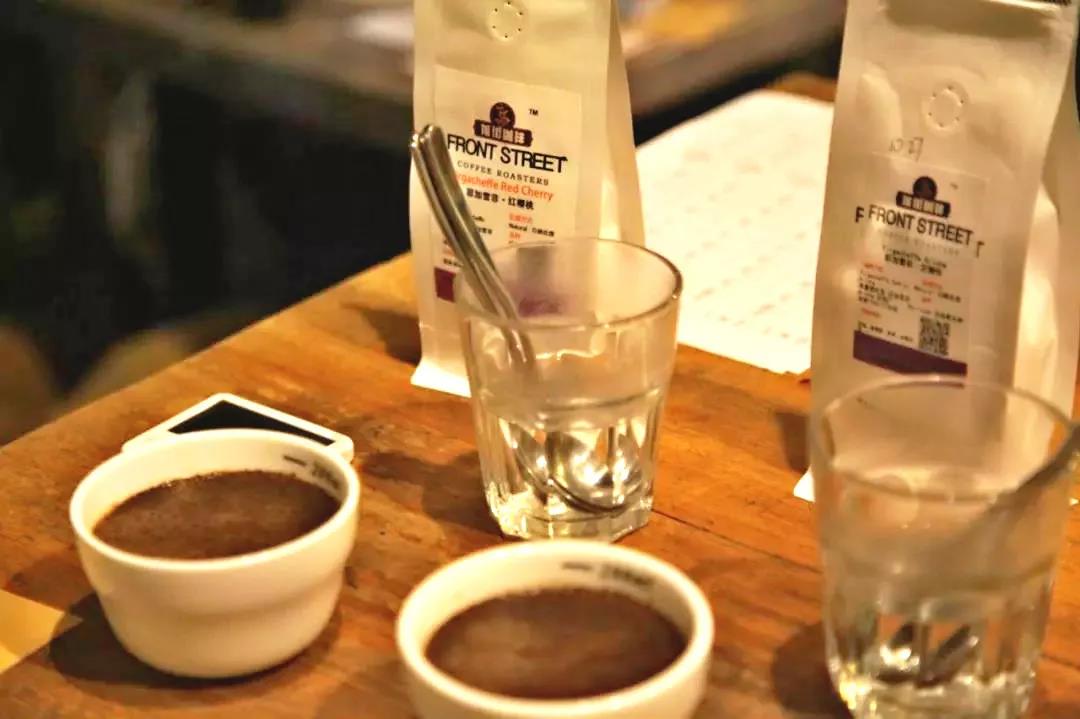
Red cherry: strawberry, berry, cream, spice, almond, oolong tea
Aricha: fermented fruit, apricot, cedar, berry, black tea
In fact, the flavor of the two beans is quite similar in the cup test, both have a strong sense of sweetness, and show a soft and clean temperament as a whole. However, the aroma of red cherry is cleaner and higher, while Aricha is more fermented. The berry flavor of red cherry is more obvious, with some oolong tea finish, while the aroma of Aricha is relatively fresh, with apricot and black tea aftertaste.
Although in terms of raw beans, there is not much difference between red cherry planned coffee beans and non-red cherry planned coffee beans, there is an obvious difference between roasted and cup tested. because the maturity of the red cherry coffee bean is more uniform, it can retain a lot of floral fruit acid when roasting. Instead of red cherry coffee beans, because of the uneven maturity, it is difficult to take into account the uniformity of baking and the fullness and cleanliness of flavor.
Important Notice :
前街咖啡 FrontStreet Coffee has moved to new addredd:
FrontStreet Coffee Address: 315,Donghua East Road,GuangZhou
Tel:020 38364473
- Prev
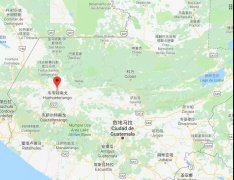
Vivette South Fruit producing area | beans characteristics and baking ideas of Pacamara | how to bake Polsa?
Professional coffee knowledge exchange more coffee bean information please follow the coffee workshop (Wechat official account cafe_style) Vivetna Fruit Coffee discussion | Pacamara flavor characteristics and baking adjustment ideas sharing yesterday we introduced Guatemala's more famous coffee producing areas and representative coffee beans, today we are aimed at one of the producing areas of high-quality coffee: Vivetna fruit
- Next
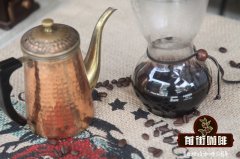
Santa Teresa Manor, Panama Solar Kaddura hand-brewed Coffee course _ 15g how much water to brew
Professional coffee knowledge exchange more coffee bean information please follow the coffee workshop (Wechat official account cafe_style) today this Panamanian coffee bean is the good bean I found in the coffee journal, periodical no. 12.3, my new talent in the harem, Panama Sunshine (Santa Teresa Manor), this Panamanian coffee bean is characterized by gentleness and delicacy.
Related
- Detailed explanation of Jadeite planting Land in Panamanian Jadeite Manor introduction to the grading system of Jadeite competitive bidding, Red bid, Green bid and Rose Summer
- Story of Coffee planting in Brenka region of Costa Rica Stonehenge Manor anaerobic heavy honey treatment of flavor mouth
- What's on the barrel of Blue Mountain Coffee beans?
- Can American coffee also pull flowers? How to use hot American style to pull out a good-looking pattern?
- Can you make a cold extract with coffee beans? What is the right proportion for cold-extracted coffee formula?
- Indonesian PWN Gold Mandrine Coffee Origin Features Flavor How to Chong? Mandolin coffee is American.
- A brief introduction to the flavor characteristics of Brazilian yellow bourbon coffee beans
- What is the effect of different water quality on the flavor of cold-extracted coffee? What kind of water is best for brewing coffee?
- Why do you think of Rose Summer whenever you mention Panamanian coffee?
- Introduction to the characteristics of authentic blue mountain coffee bean producing areas? What is the CIB Coffee Authority in Jamaica?

